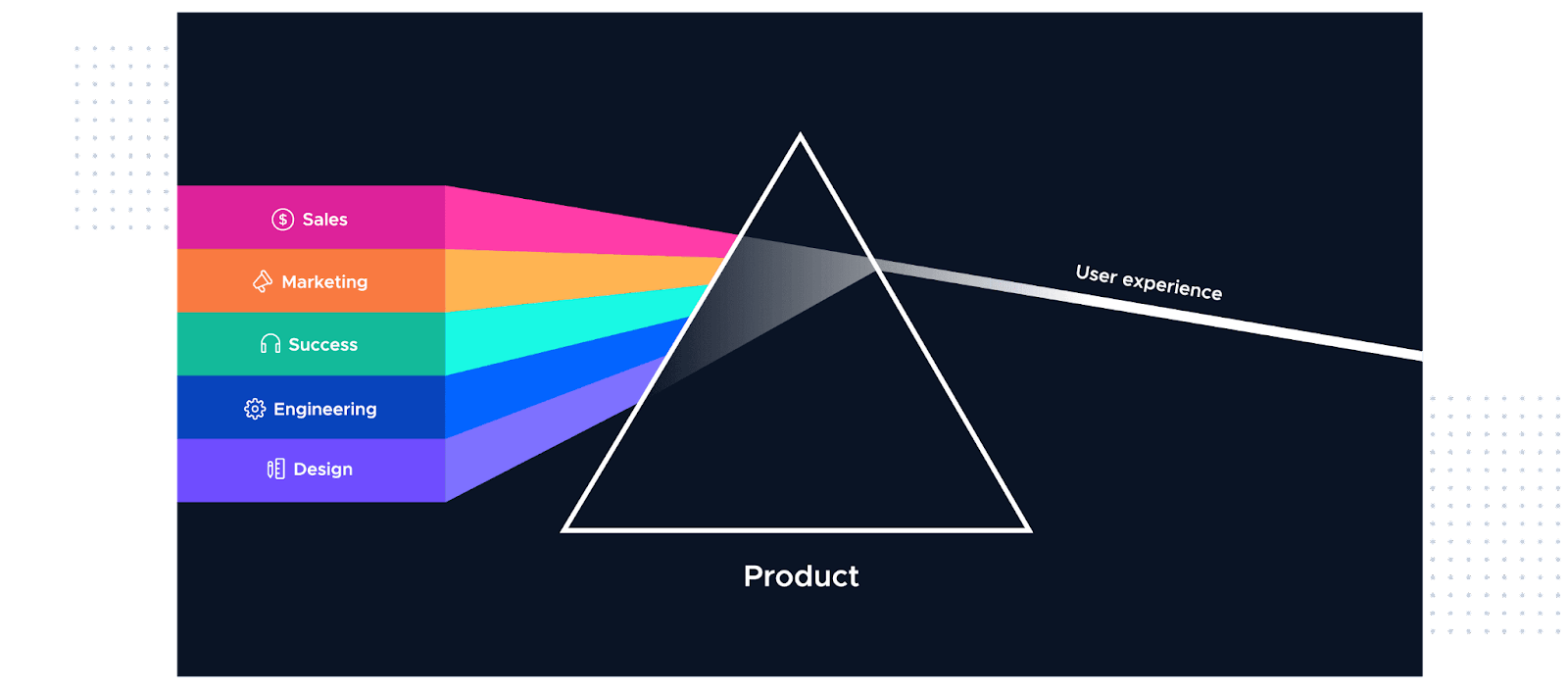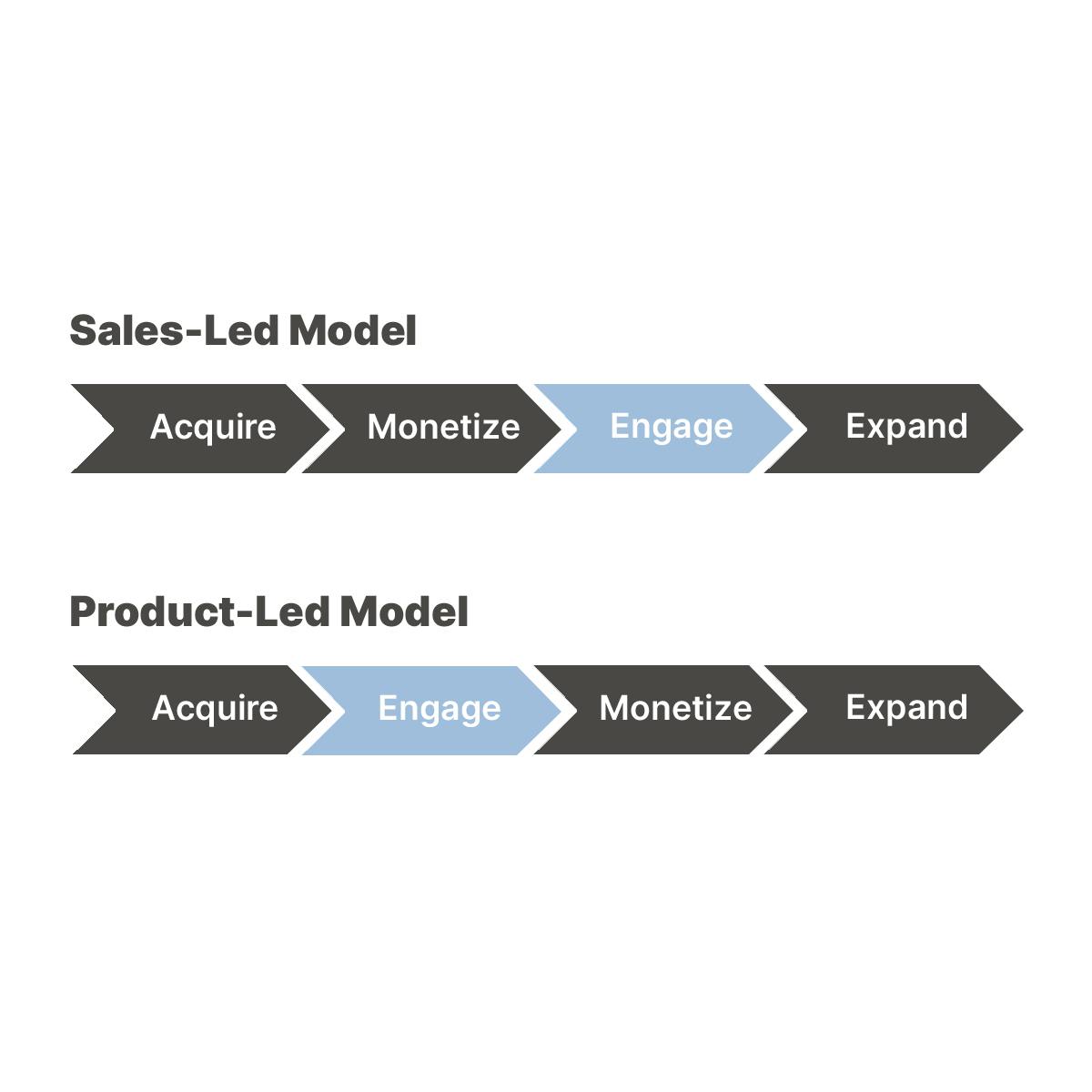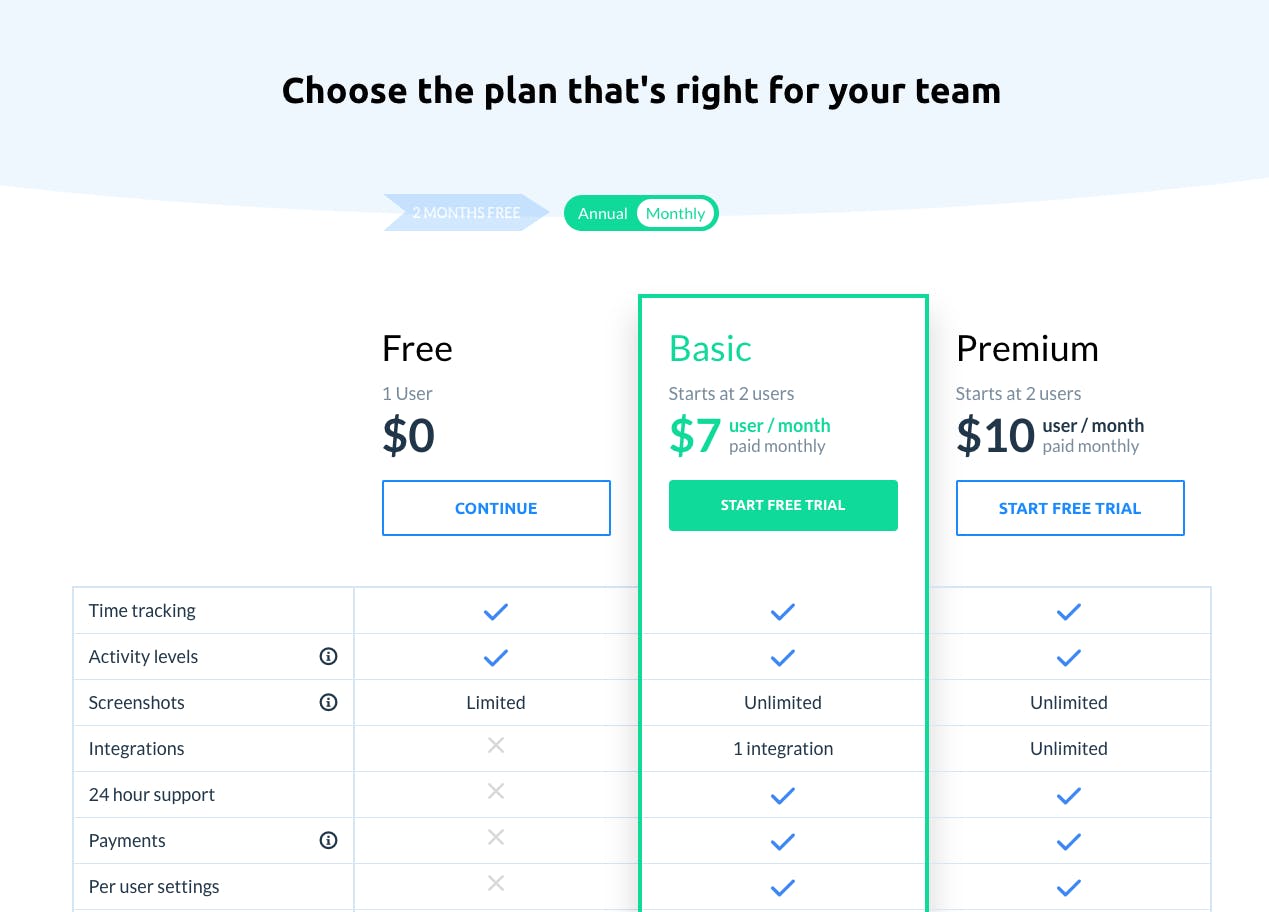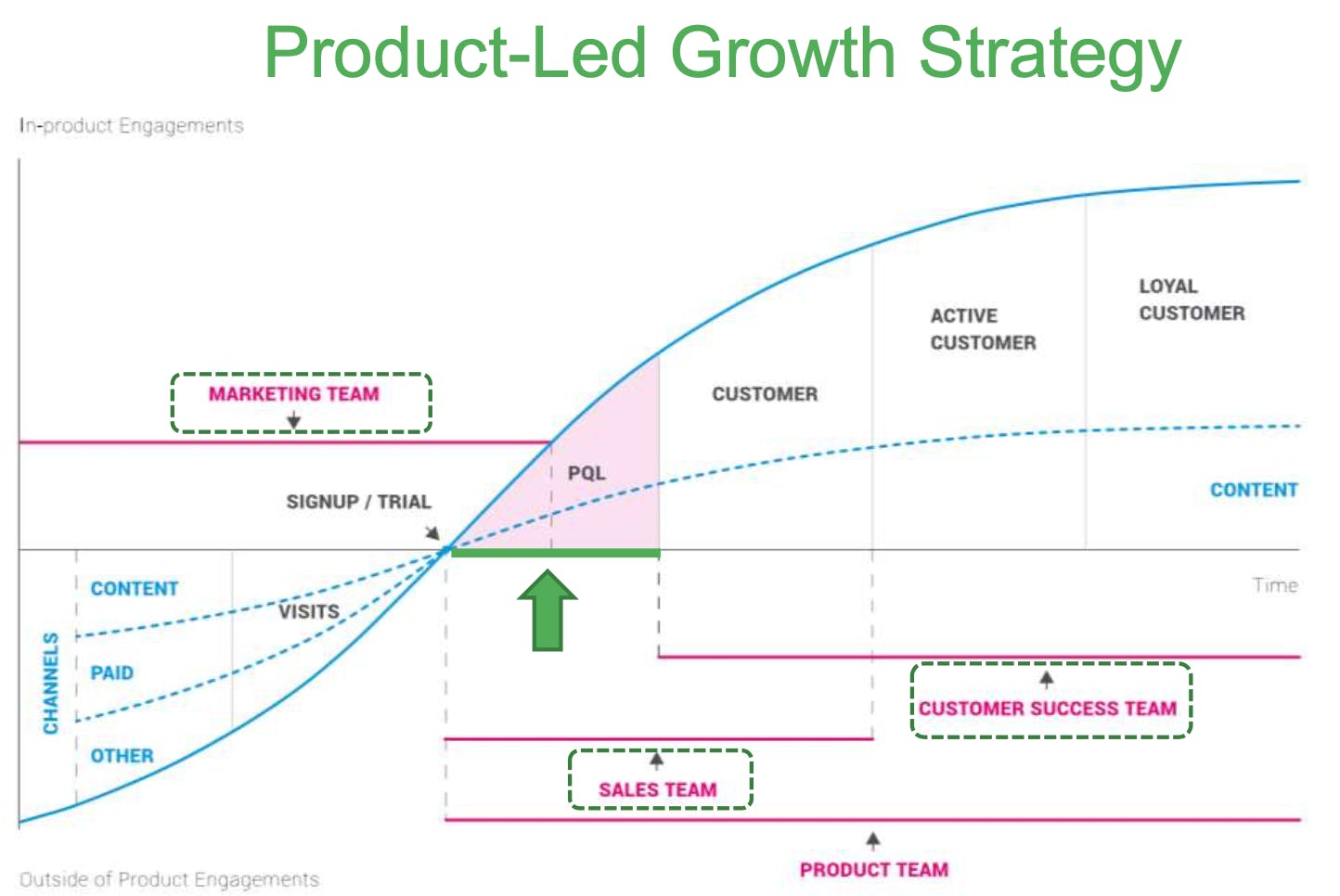Product-led growth (PLG): a comprehensive guide
Nov 23rd, 2023

In the early years following their launches, tech giants Facebook and Amazon faced significant criticism within Wall Street and the business analyst communities. Despite rapidly increasing user bases, neither company was generating profits. What many analysts failed to recognize was that both companies were employing a product-led growth strategy.
Facebook was continually adding millions of users, while Amazon was transforming itself into one of the world's largest online retailers. Eventually, both companies achieved profitability. Facebook accomplished this by monetizing its extensive and highly engaged user base, while Amazon reached it by capturing market share from other retailers. Their success stories highlight the value of giving customers enough time to get acquainted with digital products, ultimately strengthening their relationships with companies.
In this article, we will describe the product-led growth for SaaS businesses, explain how to develop a relevant strategy based on this idea, and provide the metrics the company would need to monitor to make it work.
What is product-led growth?
Product-led growth is a modern business strategy that focuses on using the product as the primary means for acquiring, retaining, and expanding the customer base. With this model, a company provides consumers free access to the offering, enabling users to discover, adopt, and derive value from it.
Blake Bartlett, an investment partner at OpenView, introduced the term in 2016, inspired by the development of SaaS companies Datadog and Expensify. He observed that these companies effectively catered to a broad consumer base without incurring substantial expenses on B2B marketing and sales, as their products performed these functions autonomously. In traditional growth models, there was often a trade-off between pursuing growth and maintaining profitability. However, companies that embraced PLG experienced remarkable success, achieving growth and profitability simultaneously.

The main characteristic of a PLG strategy is the emphasis on freemium or trial-based models. As users see the benefits of the offering, they are more likely to upgrade to premium or paid plans, driving revenue growth. Over time, the connection with the customer naturally becomes stronger, as a positive experience with the product fosters consumer loyalty without the need for human involvement.
Unlike traditional marketing approaches, PLG puts the product at the center of consumer acquisition and retention. This self-service model reduces the need for extensive sales and marketing efforts, making PLG a cost-effective strategy for startups and established companies alike.
Product-led growth vs sales-led growth
In a product-led growth strategy, the primary means for acquiring and retaining customers is the product itself. Every department within the company, from marketing and content teams to the product development team itself, focuses on optimizing its efforts to encourage specific actions related to the product. These actions move customers closer to making a purchase or conversion.
For a PLG strategy to be effective, a company should have either a free trial or a freemium product. Customers will register, and with the help of the onboarding process, a resource hub, automated marketing messages, chatbots, or a community forum, they will explore how the product benefits their organization and turn into paying customers.

A sales-led growth strategy, in contrast, relies on a dedicated sales team actively seeking out potential leads, addressing product demonstration requests, and establishing partnerships through contracts. A sales-led growth strategy places the main emphasis on a sales team within a company's operations, focusing on moving leads through the sales funnel. The primary goal is to achieve rapid revenue growth while maintaining profitability and ensuring customer satisfaction.
Businesses that employ a sales-led growth strategy often offer complex products that require in-depth training from experts. These companies make significant investments in their sales teams, prioritizing the recruitment and training of sales professionals, establishing efficient sales procedures, and ensuring the availability of resources to support sales activities.
In a sales-led company, the strategy typically aligns with the traditional marketing funnel, where leads move through the qualification process and then are passed to the sales team for nurturing and conversion. Therefore, the critical difference between the two strategies is the emphasis on product adoption and user-driven growth for PLG. At the same time, the sales-led approach relies on sales professionals and active outreach for revenue generation.
Product-led growth strategy
Developing a product-led growth strategy can be a practical approach to driving user growth for your software or technology product. Here are seven steps to help you create a PLG strategy.
Step 1. Develop a great product
In a product-led growth company, the offering takes on a significant role in attracting new users, reducing the need for substantial investments in sales, marketing, advertising, or other customer acquisition methods. Therefore, even prior to the product launch, the team should focus on creating an exceptional offering that can address customers’ problems and provide value.
It begins with a deep understanding of your target audience. Conduct in-depth market research, gather user feedback, and create detailed user personas to guide your product development efforts. Your product's value proposition should be crystal clear, highlighting how it addresses specific problems and improves users' lives. Moreover, it should be concise and compelling, making it easy for potential users to grasp why they should choose your product.
Invest in an intuitive and user-friendly design that ensures a seamless and enjoyable user experience. Make sure that your product can scale with the increase of your user base. Scalability and robust performance allow your product to adapt and thrive as your customer base grows.
Step 2. Provide a self-serve buying experience
Providing a self-service onboarding experience is one of the guiding principles of product-led sales. Customers should be able to register and start using your product without the involvement of a salesperson.
Create a well-designed onboarding process that guides users through the initial setup of your product. It typically begins with the user signing up or creating an account and progresses through crucial actions that help customers understand and experience the product's value.
Use in-app tutorials, tooltips, and interactive guides to educate users about your product's features and functionalities. These resources should be readily available and triggered at the right moments to help users in their journey. Offer easy access to customer support resources during onboarding if consumers encounter any issues or have questions. Provide clear avenues for users to seek help, such as chat support, knowledge bases, or community forums. All of these should, in essence, turn into self-serve sales enablement materials and tools.
Step 3. Offer a free trial or freemium
Offer a free version of your product or a freemium model with limited features. It allows the buyers to assess your product’s capabilities before purchasing a premium version. Communicate the value users can derive from the free offering. Highlight how your product can solve their problems or meet the customer needs even in its limited form. Emphasize the benefits and advantages of upgrading to the premium version.
In a free offering, you provide a fully functional version of your product without time limitations. This option allows users to access and use the core features without any initial payment. In a freemium offering, you provide both a free version and a premium or paid version of your product. The free version typically includes basic features, while the premium option offers advanced functionalities and additional benefits. Users can choose to upgrade to the premium version if they require more capabilities or a higher level of service.
Simplify the registration process for users to access the free offering. Avoid requiring credit card information or imposing complex sign-up forms that may deter potential users. The goal is to make it effortless for users to get started with your product.

Step 4. Review your pricing model
Revisiting your pricing model is a pivotal step that involves adapting your pricing strategy to align with the self-service nature of your product. Choose a pricing model that matches your product’s characteristics, whether a per-user, flat fee or hybrid strategy. Evaluate the perceived value of your product's features and functionalities. Consider what aspects of your offering are most crucial to users and align your pricing accordingly.
You can implement tiered pricing, where premium features come at a higher cost. Offer free trial periods for premium plans to allow customers to experience the full scope of your product's capabilities. During this trial, actively engage with users to demonstrate the value of the premium features. Avoid complex pricing structures that confuse customers. Communicate the pricing tiers, features included at each level, and any potential limits.
Depending on your product, consider adopting usage-based pricing models where consumers pay based on their actual product usage. This can be particularly effective for products that scale with users' needs or resources. Ensure that your pricing tiers cater to different customer segments, from individual users to enterprise-level clients, and provide pricing flexibility where needed.

Step 5. Implement viral features
By implementing viral features, you can encourage existing users to promote your product to others and expand your customer base. Begin by identifying the viral mechanics or features within your product. These elements naturally encourage users to invite others to use the product. Standard viral mechanics include referral programs, sharing options, and collaborative features.
Create programs that reward customers for referring new users. Offer incentives, such as discounts, credits, or exclusive features, to motivate people to share your product with their network. Incorporate social sharing buttons and integrations with popular social media platforms. Allow users to easily share their achievements, activities, or content created within your product with their subscribers on social media.
Use in-product prompts, notifications, or gamification to highlight the benefits of inviting friends or colleagues to join. Show users how their network can enhance their experience and productivity. If applicable, develop collaborative or network-based features that encourage users to invite others to participate. For example, collaborative document editing tools often motivate users to invite colleagues, driving adoption through teamwork.
Step 6. Put the client first
Customer success is a top priority in product-led growth strategy. It entails investing in processes and resources that help consumers accomplish their goals while efficiently scaling your operations to accommodate growing user demand.
Offer proactive customer support by providing comprehensive self-service resources, including knowledge bases, FAQs, tutorials, and user guides. Encourage consumers to find solutions to common issues independently. Maintain customer service channels, such as email, live chat, or ticketing systems, to assist users with more complex or unique queries. Ensure that your support team is well-trained and equipped to address customer needs. In essence, you want to turn your sales and marketing efforts into a growth marketing strategy that helps the product better serve your customers.
Create an active user community where users can interact, share experiences, and help each other. Host forums, discussion boards, or social media groups related to your product. Encourage users to generate content, such as tutorials and tips. Develop training programs or webinars to educate customers about advanced features and best practices. These initiatives can empower consumers to maximize the value they derive from your product.
Step 7. Utilize analytics and data to optimize your sales funnel
Lastly, to ensure the success of your product-led growth strategy, you should monitor key metrics like user acquisition, retention, and engagement and study this data to enhance and optimize your tactics. Utilize user analytics tools to gather data on user behavior within your product. This data can provide insights into how users interact with your product, which features they find valuable, and where they may encounter obstacles.
Implement A/B testing to experiment with different variations of your product, marketing strategies, or user experiences. Test changes in pricing models, onboarding flows, feature placements, and messaging to determine which variations yield the best results in terms of user acquisition and retention.
Actively seek and gather user feedback through surveys, in-app feedback forms, and interviews. Analyze this data to identify pain points and preferences, helping to inform product improvements. In addition, perform cohort analysis to group users based on common characteristics, such as sign-up date or user behavior. Analyzing cohorts over time can reveal trends and patterns related to user retention and engagement.
Based on the insights gathered from the above analyses, continuously iterate on your product, user experience, and growth strategies and look for ways to minimize time to market for new iterations at the same time. Implement changes to improve user acquisition, onboarding, engagement, and retention. Refine your PLG strategy based on changing user needs and market dynamics.
Product-led growth metrics
Product-led growth metrics are key performance indicators that you can use to assess the effectiveness of a PLG strategy. PLG metrics are essential for any team or company looking to expand through a product-led growth strategy because they can help cross-functional teams stay focused on the same goal. Moreover, metrics allow your company to facilitate decision-making by prioritizing the most crucial opportunities. Let us consider five critical metrics for product-led growth.
Customer Acquisition Cost
Customer Acquisition Cost determines the cost of attracting a new client, including all sales and marketing expenses. For product-led companies, CAC tends to be minimal, as new customers often discover and adopt the product through self-service, word-of-mouth referrals, or organic channels. Your primary objective is to lower this number as much as possible. To reduce this cost, you can focus on improving your marketing activities, streamlining your sales process, or enhancing your product.
To determine Customer Acquisition Cost, you can use the following formula:
CAC = (Total Sales and Marketing Expenses) / (Number of New Customers Acquired)
CAC should ideally be lower than the Customer Lifetime Value (CLTV) to ensure a sustainable and profitable growth strategy. A common benchmark is a CAC-to-CLTV ratio of 1:3 or 1:4.
Customer Lifetime Value
Customer Lifetime Value helps predict the total revenue your company can generate from an individual customer over the lifetime of their account. This metric demonstrates how well your business retains customers. In addition, CLV allows you to determine valuable customer segments and estimate acquisition and retention costs.
Customer Lifetime Value is often calculated with the formula:
CLV = (Average Purchase Value × Average Purchase Frequency) × Average Customer Lifespan
Average Purchase Value is the average amount of money a customer spends on each purchase or transaction with your business. You can calculate it by dividing the total revenue from all customers by the total number of transactions during a specific period.
APV = Total Revenue / Number of Transactions
Average Purchase Frequency (APF) is the average number of transactions a customer makes in a given time period (e.g., per year). Customer Lifespan is the average number of years a customer continues to do business with your company. Therefore, to calculate CLV, you would multiply these three components together.
Keep in mind that there are variations of this formula that take into account factors like retention rate, discount rates, and other variables to make the calculation more accurate. A healthy CLV varies widely by industry, but generally, a CLV that is at least three to five times higher than the CAC is considered favorable.
Churn rate
Churn is the rate at which customers stop using your product within a specific time frame, often measured monthly or annually. High churn indicates that customers are not finding enough value to stay engaged. Thus, reducing churn is essential for sustainable growth.
You can identify the Churn Rate using this formula:
Churn Rate = (Lost Users / Total Number of Users at the Start of Period) x 100
The churn rate is typically measured on a monthly or annual basis. In a B2B SaaS context, a monthly churn rate below 1-2% is excellent. In B2C or freemium models, a monthly churn rate below 5% can be a good benchmark.
Net Promoter Score
Net Promoter Score is a consumer satisfaction metric that measures the likelihood of customers recommending your product to others on a scale from 0 to 10. This metric helps estimate consumer loyalty, identify users who can become brand advocates, and understand how customers perceive your offering.
It's based on the answers to a single question: "On a scale of 0 to 10, how likely are you to recommend our company/product/service to a friend or colleague?" The results of an NPS survey are used to determine if a consumer is satisfied, enthusiastic, neutral, or unlikely to refer your product to a friend.
Promoters (Score 9-10): These customers are highly satisfied with your product or service and are considered loyal enthusiasts. They will likely recommend your company to others and are valuable advocates for your brand.
Passives (Score 7-8): These consumers are generally satisfied with your product or service, but they are less enthusiastic than promoters. They are considered neutral and may or may not actively promote your brand.
Detractors (Score 0-6): These people are dissatisfied with your product or service and are unlikely to recommend it to others. They may even share negative feedback and potentially harm your brand's reputation.
To calculate NPS, you can utilize the following formula:
NPS = % of Promoters - % of Detractors
NPS scores range from -100 to +100. Scores above 50 are considered excellent, scores between 30 and 50 are good, and scores below 30 may indicate room for improvement. However, this is a general estimate, but it differs by industry. So, you should seek industry benchmarks to get a better understanding of your success compared to competitors.
Monthly Active Users
Monthly Active Users is a number of unique users who actively engage with software within a specific month. MAU indicates the reach and popularity of your product. It is a fundamental metric for understanding user adoption and engagement. Typically, to determine MAU, you should use internal corporate data.
The number of MAUs can vary widely based on your industry and the type of product you offer. Compare your MAU growth rate to industry averages or competitors with similar solutions. Steady month-over-month growth is generally a positive sign.
By placing the product at the center of customer acquisition and retention efforts, PLG leverages user experience and word-of-mouth referrals to drive sustainable growth. This strategy emphasizes seamless onboarding, user engagement, and delivering continuous customer value. Thus, embracing the principles of product-led growth can pave the way for unlocking new opportunities and achieving long-term success.
